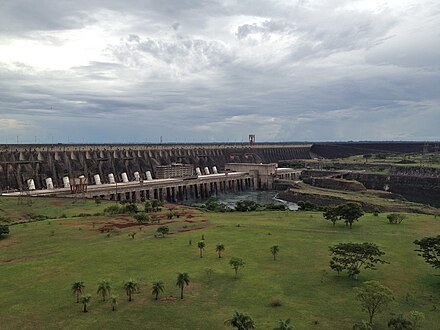Paraguay - sovereign state in South America
Paraguay is a country of big rivers, green landscapes, folklore and a rich indigenous culture in central South America. It's relatively small compared to its neighbors, with an area of 406,752 km<sup>2</sup>: about the same size as Germany. Paraguay is lacking in world-famous attractions, and tourist-oriented establishments are few and far between. But those visitors who do come will be rewarded with a great experience of South America: colonial history, ruins of missions, vast wilderness, and a strong mix of European and indigenous cultures.
Regions

The large, wild, semi-arid plains in the northwest of the country.
The forested highlands in Paraguay's east, along the Paraná River, home to the second largest city of Ciudad del Este, just over the river from Iguaçu Falls.
Home to the population center of the country, in and around Asunción.
Cities
- Asunción - the capital
- Areguá
- Ciudad del Este - this busy border city is also Paraguay's gateway to the Iguazu Falls
- Concepción
- Encarnación and its Jesuit Missions of La Santisima Trinidad de Parana and Jesus de Tavarangue
- Filadelfia - the departmental seat of Boquerón, founded as a Mennonite colony
- Pilar
- Villeta
Other destinations
- New Australia (New London) – A late 19th century Australian socialist settlement in the southern part of the country. It was renamed to Nueva Londres in 1957. It is famous with tourists for its yearly Fiesta del Tujú on December 25th.
- San Bernardino – The liveliest resort town of Paraguay, east of the capital.
- Trinidad – A small village near Encarnación famous for the Jesuit ruins Santísima of Trinidad de Paraná, the only UNESCO World Heritage Site in Paraguay.
Itineraries
Understand
Not often regarded as a major travel destination, Paraguay has been experiencing a steady increase of visitors. Paraguay is South America's second-poorest country and it is a common sight to see beggars asking for money on Asunción's intersections.
A major producer of beef, so do not be surprised to find cattle eating grass just a few centimetres from the highways, especially in the Chaco region and Misiones Department. Paraguay is the world's fifth largest exporter of soya beans, so expect to see hundreds of square kilometres of soya plantations especially in the southeast, east and northeast regions.
Brazilians often come over to Paraguayan border towns to shop for imported goods thanks to the favourable currency exchange rate and lower taxes on electronics, alcohol and most duty-free items.
History
.JPG/440px-General_view_-_Trinidad_(Paraguay).JPG)
 The Guaraní were the most significant indigenous group inhabiting what is now Eastern Paraguay, living as semi-nomadic hunters who also practised subsistence agriculture. The Chaco region was home to other groups of indigenous tribes such as the Guaycurú and Payaguá, who survived by hunting, gathering and fishing.
The Guaraní were the most significant indigenous group inhabiting what is now Eastern Paraguay, living as semi-nomadic hunters who also practised subsistence agriculture. The Chaco region was home to other groups of indigenous tribes such as the Guaycurú and Payaguá, who survived by hunting, gathering and fishing.
In the 16th century Paraguay, formerly called "The Giant Province of the Indies", was born as a result of the encounter of Spanish conquerors with the native indigenous groups. The Spaniards started the colonization period which lasted for three centuries. Since the foundation of Asunción in 1537, Paraguay has managed to keep a lot of its indigenous character and identity. Nowadays, the mestizos (Spanish and Amerindian) account for more than 80% of the country's 6.6 million inhabitants and Guarani is, side by side with Spanish, the country's official language.
In the past, Franciscan and Jesuit missions mingled with the Guaranis' dream of Yvy maraë´y, a land without evil, and produced singular societies. The ruins of the Jesuit Missions of La Santisima Trinidad de Parana and Jesus de Tavarangue, UNESCO World Heritage sites, and several villages throughout the country, are witnesses to that peaceful past. On 15 May 1811 a revolution ended the Spanish colonial rule and this day is celebrated as Paraguay's independence day.
Shortly after independence came the paranoid dictatorship of Gaspar Rodríguez de Francia (1814-1840) who, convinced of plots to kill him, declared that the buildings in Asunción had to be low enough so that he could see who was on the roof while riding his horse and that at every street corner he should be able to see in all four directions so that would-be assassins would have nowhere to hide. The destruction of colonial buildings that didn't fit in with this scheme robbed Asunción of some architectural gems.
But Paraguay also has a history of wars, having fought with all its neighbours. It was one of the richest countries in the mid-19th century (the only one in America to have railways at that time) before the disastrous 1865-70 War of the Triple Alliance. Paraguay was invaded by the allied forces of Argentina, Brazil, and Uruguay and after 5 years of heavy fighting and utter destruction, the country surrendered. The result was the loss of two-thirds of all adult males and a great part of its territory.
A unique event was the scene of the first attempt at Communism when 700 people sailed from Sydney, Australia, in 1893 to found "New Australia." Two-thirds of the immigrants eventually returned to Australia but around 2,000 Paraguayans can trace their heritage to Australia.
To complete the fighting with its neighbors, in the 1930s another war broke out, the Chaco War of 1932-35 engaged Paraguay with Bolivia over the possession of the Chaco region. When the war ended, large and economically important areas of the Chaco that belonged to Paraguay were given to Bolivia as part of the peace treaty of 1938.
After World War II Paraguay received many immigrants. New colonies of Germans, Russians, Italians, Ukrainians, Japanese and Mennonites were established in different parts of the country.
The dictator Alfredo Stroessner was overthrown in 1989 after 35 years of autocracy, and democratically-elected governments have ruled since then. Modern Paraguay is largely based upon political uncertainty and economic hardship. Moving to a more modern market economy has increased prosperity but also inequality. While Asuncion is filled with new economic prospects and construction, much of the country remains underdeveloped, with poor infrastructure.
Geography
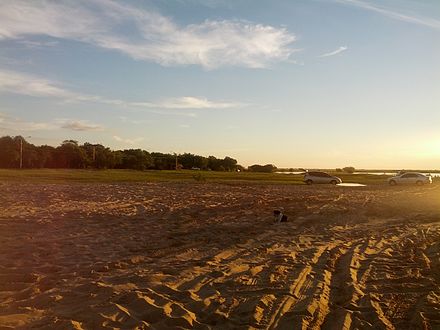 With a total surface area of 406,752 km², Paraguay is divided by the Paraguay River into two well-differentiated natural regions: the Eastern or Oriental Region and the Western or Chaco Region, each one with their own fauna, flora, and particular characteristics.
With a total surface area of 406,752 km², Paraguay is divided by the Paraguay River into two well-differentiated natural regions: the Eastern or Oriental Region and the Western or Chaco Region, each one with their own fauna, flora, and particular characteristics.
Although Paraguay is landlocked, the country is watered by numerous rivers, streams, and lakes, which are all part of the Rio de la Plata river basin. The two principal rivers are the river Paraguay, which divides the country in two, and the river Paraná, which forms the frontier with Paraná state in Brazil and with Corrientes and Misiones provinces in Argentina.
Overall Paraguay is a quite flat country; while its western neighbours Argentina and Bolivia include mountains higher than 6,000 m above sea level, the highest point in Paraguay is Cerro Tres Kandú with a height of 842 m.
Climate
Paraguay is generally hot for most of the year. The fact is that the Tropic of Capricorn passes through the city of Belén in Northern Paraguay, dividing the country into a tropical area to the north and a temperate one to the south. The hottest time of year is from November to February when daytime temperatures can peak around 45°C and high atmospheric pressure makes just walking along the street a tough task. Winter (June to September) is pleasantly warm during the day (around 20–25°C), generally sunny and dry but frequently cool at night with the occasional morning frost. January is the hottest month with an average maximum temperate of 36°C, and July is the coldest with a minimum average of 9°C.
Eastern Paraguay can be very humid, while western Paraguay (the Chaco) is dry. There is no real rainy season, but from September to November electric storms become more frequent and travelling off-road can be more difficult. The climate generally follows the prevailing winds, viento sur (southerly winds) bringing cooler temperatures from Patagonia and viento norte (northern winds) bringing hotter weather from the tropics.
Tourism
Most travellers "of" the beaten track will not enjoy Paraguay nor recommend it to others. It can certainly not keep track with sights like Torres del Paine, Salar de Uyuni, El Calafate or Machu Picchu in South America. However, for people disgusted with the commercialisation of travelling and in the search of the journey to themselves and the authentic side of South America, Paraguay offers many gems, a laid-back and inexpensive journey, and a way to the warm heart of South American people.
Get in

.JPG/440px-Rio_Paraguay_(Asunci%C3%B3n).JPG)

Entry requirements
Visa-free entry
All adult visitors from South American countries, except the Guyanas, may enter Paraguay with their National ID card. All other visitors travelling to Paraguay are required to carry a valid passport. Visa-free access for visitors from the European Union, Latin American countries, as well as South Korea (30 days), Japan, Israel, South Africa and Taiwan. All tourists are granted a tourist visa for 90 days.
In case you leave the country via one of the many land borders, an exit stamp is not necessarily required if you travel visa-free and receive a proper entry stamp in the following country. On (re-)entry into Paraguay, no one will check your existing stamps for completeness. Also, in case you visit Ciudad del Este, you might travel forth and back between the border for various reasons, hence just having entry stamps of both countries (Brazil and Paraguay) is convenient. Entering/leaving through one of the many land borders can be a good way of leaving the country in case you accidentally overstayed.
Visa entry
Visas are no longer required for citizens of Australia, New Zealand, the United States, and Canada. This change is valid until October of 2024, as part of a plan to reactivate tourism. Travellers of all other nationalities should check the visa requirements for their country with the nearest Paraguayan Embassy before travelling to Paraguay.
Except for the countries named above, visas must be obtained in advance through the Paraguayan Embassy or Consulate, as they are not available upon entry to the country.
Land borders
Paraguay has many land border crossings and allows for easy entry from Bolivia, Brazil and Argentina if you have a valid visa or can enter visa-free. Border formalities are sometimes not carried out at the border but at the next bigger city/town, like in Concepción coming from Bolivia or Brazil, or in Mariscal Estigarribia coming from Bolivia or Argentina. Otherwise Formosa to Asunción, Ciudad del Este and Encarnación are straight forward.
By plane
Although it is in the centre of South America, there isn't an abundance of flights. The only intercontinental flight is the four-times a week Air Europa's offer from Madrid Barajas to Asuncion, so most overseas travellers must change planes either in São Paulo (for those coming from North America, Europe, Africa, the Middle East and Asia), Buenos Aires or Santiago (for those coming from Australia and the Pacific), and Lima or Panama City (for those coming from Central America and the Caribbean). The main international airport is Silvio Pettirosi (IATA: ASU) 10 km outside the capital, Asunción.
The following airlines offer direct flights to Paraguay:
- Aerolíneas Argentinas.
- Air Europa.
- Amaszonas. 2018-01-29
- Avianca.
- Copa Airlines.
- GOL.
- LATAM.
By train
There is a train shuttle between Encarnación, Paraguay and Posadas, Argentina. The service connects both sides of the international border in 10 minutes crossing the Paraná River through the San Roque González de Santa Cruz International Bridge.
By bus
Bus service is available to and from a wide range of South American cities. You can take a bus from Santiago, Chile; São Paulo, Brazil; Buenos Aires, Argentina; Cordoba, Argentina; Santa Cruz, Bolivia; Montevideo, Uruguay; Rio de Janeiro, Brazil. Buses are very modern and some buses have seats that fully recline into beds. In Spanish they are called coche-cama. Semi-cama recline most of the way.
The bus to and from Bolivia crosses the Chaco. Only one bus company does the trip, from Santa Cruz to Asunción, with possible stops at Villamontes (Bolivia) or a few kilometers of Filadelfia (Paraguay) but typically for the same price. Beware that tourists should bargain, with minimum prices of US$45 (payable in local currency or in USD). The trip takes at least a full day, and easily more. The bus coming from Santa Cruz passes Villamontes at about 02:00.
The bus from Ciudad Del Este (Paraguay) at the border with Brazil is typically cheaper for going to Rio or São Paulo than the bus going from Foz do Iguaçu (Brazil). To go to Puerto Iguazú (Argentina) many city buses cross Brazil (without Brazilian border control) into Argentina for only AR$10 or ₲10,000. Best visit the border in advance to get an exit stamp for Paraguay because not all buses make a stop, otherwise ask before jumping on a bus.
By boat
Two boats travel regularly from Concepción up the Paraguay River to Bahía Negra (near the Bolivian border) or Fuerte Olimpo (mostly for Brazil) once a week and back stopping at all Paraguayan ports allowing for entry from/to Brazil and Bolivia. These boats were not designed to carry a great number of passengers, but have private cabins for up to 4 people. So, expect a sticky crowded experience, but you can buy just about anything on board, even cold beer.
From Bolivia you need to organise transport between Puerto Suárez and Puerto Busch at the southern end of RN4, and from there a boat to/from the Paraguayan side, most like using the Estación Biológica “Los Tres Gigantes” option, or directly to/from Bahía Negra. However, there seems to be a proper trail through the jungle to Bahía Negra (~10 km) from the most southern corner of Bolivia (in this region). Check out the maps (OpenStreetMap) and satellite pictures.
Get around

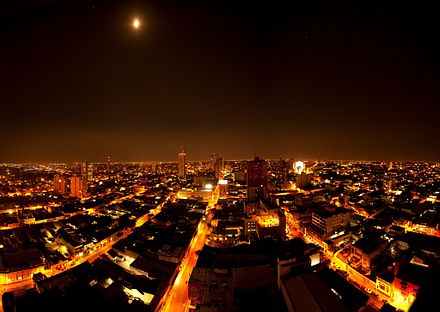

By bus
Buses, also called Colectivos in Paraguay, are the most common public transport. There are many companies running different lines.
When leaving from Asunción, the web page of the bus terminal (dead link: February 2023) has information about ticket prices for all destinations and bus companies as well as departure times. The site is in Spanish only and there's no information about travel times nor schedules for trips towards Asuncion.
Some intercity bus companies include:
- Nuestra Señora de la Asunción
- La Encarnacena (dead link: January 2023)
By taxi
Taxis are expensive compared to other prices in Paraguay, and in Asunción the fares are determined by the meter. Tipping in taxis is not customary among locals (although drivers do appreciate it). Expect to pay a small surcharge on top of the fare if you are taking a taxi late in the evening, or on a Sunday.
Outside Asunción there are no meters so make sure you decide on a price before you get in. Bargaining on a price may be useful, as tourists have been asked for US$10 for a five-minute ride. To prevent any disputes, always ask your hotel concierge how much the real cost of the fare should be.
By car
There are highways connecting all the major regions of Paraguay, but most of them are one lane each way. You may hit toll booths along the way.
Police may pull you over for any reason and will expect bribes. Locals may say that the most common way to avoid giving too much money on the bribes requested by the 'polícia caminera' (road police) is by giving them a small guarani note while shaking their hands when they stop your car. Also, it is advised that, when they ask you, play dumb until they let you go with a warning and do not admit to travelling through Paraguay for the first time. Refrain from handing out bribes, known as coimas, since it is only harmful for the country. Tell them that you don't carry money and that you weren't aware that was not allowed. If you have committed something wrong, you should pay the fine and always ask for a receipt.
You will probably only face this kind of problem with the police on the country roads. These problems do not generally occur in any of the wealthier areas of the major cities where you can keep a somewhat 'nicer' relationship with the police.
By thumb
Contrary to expectations, tugged between Northern Argentina, Bolivia and Western Brazil, which are not very popular with hitch-hikers, travelling by thumb in Paraguay is possible and surprisingly easy for tourists, even though not generally common. Along the main roads with much traffic you will always find the odd helper that takes you along the way, even couples and women. Often, you will not have to wait longer than 15 min, but barely an hour. Hitch-hiking can be considerably faster than taking the bus around Paraguay that stops every 5 km to pick up/off. Nevertheless, on rural road traffic can be very light, and often people use motorbikes or cover only short distances, thus hesitant to pick you up. But you can always try and opt for the bus if the thumb does not work.
Do not expect big conversations with locals like in Southern Argentina: the attitude of people is more like in Chile. But Paraguay offers far better access to passing cars than Chile with its major and complicated highways in the center.
Talk
Some basic greetings in Guarani include:
- Mba'eichapa? – How are you?
- Iporã – Good.
- Ha nde? – And you?
- Iporã avei – Good as well.
Both Spanish and Guaraní are official. Most people in Paraguay speak Spanish and use of English is very limited. Outside of Asunción and big cities, Guarani is all you will hear. Due to the extensive use of Guarani, even those who have managed to learn Spanish do not always speak it very well.
In Paraguay, Guarani is almost always spoken as a mix of Guarani and Spanish, known as Jopara, meaning "mixed" in Guarani. The number system in Guarani is rarely used, and is almost always replaced with the Spanish number system.
In Paraguay vos is used instead of tu. There is a slight change in conjugation but not big enough that you won't be understood using tu. This vos is not the same as vosotros. Stems do not change in verbs when using "vos", and the ending is always stressed. For example "tienes" changes to "tenés", "puedes" changes to "podés", "vienes" changes to "venís" etc.
In the northern and eastern parts of Paraguay, Portuguese is spoken widely. In some places, Nueva Esperanza (80% Portuguese speaking), Katuetè (60%) the majority speak Portuguese, almost always the result of Paraguayan born, or first generation Brazilian immigrants. There are many cases of Paraguayans, who were born during the era of Brazilian immigration who speak only Portuguese at home, although also fluent Guarani and Spanish.
There are also a number of Mennonite communities throughout Paraguay where Low German and standard German are spoken.
See
- The capital Asunción hosts a large part of the country's sights.
- In Trinidad you can see Paraguay's only UNESCO World Heritage Site; the Jesuit Missions of La Santisima Trinidad de Paraná and Jesus de Tavarangue.
- There is a well in the city of Santani (San Pedro) that does not go dry. The local museum also contains a large snakeskin.
- The Itaipu dam near Ciudad del Este which is the largest hydroelectric dam in the world, measured by generated power. Contrary to the Brazilian side, all tours to the dam are free, just some require early registration.
- Also in Ciudad del Este (actually in Presidente Franco just south), you can find the impressive Salto Del Monday waterfall, and while not as large as the nearby Iguazu Falls, but definitely worth a visit.
- Encarnación is a laid-back city with the beautiful San Jose (river) Beach and a relaxing promenade where you can just hang around for a couple of days and enjoy the local bar culture.
- The Catedral Virgen de Caacupé in Caacupé is a beautiful church with a tower viewpoint not far from Asunción.
- The Iglesia San Buenaventura de Yaguarón (or Templo de San Buenaventure) in Yaguarón inhibits impressive baroque wood carvings inside a rather unconventional, although typical for this region, church (closed Mondays).
Do
 Walk through the historic Asunción city center. Many former grand buildings are suffering from great decay, but if you look past graffiti walls, you can imagine Asunción's past splendour. At nights, you can take a cab ride and enjoy it fully illuminated. There are many bars, restaurants in this area.
Walk through the historic Asunción city center. Many former grand buildings are suffering from great decay, but if you look past graffiti walls, you can imagine Asunción's past splendour. At nights, you can take a cab ride and enjoy it fully illuminated. There are many bars, restaurants in this area.- Sights around Asunción. There are some interesting sights around Asunción well worth a day or 2 day trip. 2018-06-22
- Aquidabán Cargo Ferry. Take this 3 day ferry up north along the Paraguay River for a quite different but authentic local experience. 2018-06-22
- Estación Biológica Los Tres Gigantes. Visit this nature park in the Pantanal. The Pantanal spreads over Bolivia, Brazil and Paraguay and inherits an extraordinary set of local flora and fauna. 2018-06-22
- Cerro Corá National Park. If you are in search for a 1-2 day national park that combines short trails, history and beautiful landscape, head here. 2018-06-22
- Nature Reserve Cordillera San Rafael. Far larger than Cerro Corá is this nature reserve between Encarnación and Ciudad del Este. 2018-06-22
- Snow Park, Ciudad Del Este. If you are looking for something out of the ordinary, check out the Snow Park in Ciudad Del Este. Grab a board or some skis and hit the piste. 2018-06-22
- Contrary to Argentina and Bolivia, national parks and historical sites run by the government are generally free or cheap: the three Jesuit sites near Trinidad, for instance, are just €4. On the other hand, some parks are run privately and demand steep entrance and accommodation prices, like the Mbaracayú Forest Nature Reserve. However, they might cater more specifically for tourists with the intention to deliver "results" and could be worth it.
Events
- Areté Guazú (Big Festival) - a three-day indigenous celebration held between February/March in many locations, including Filadelfia and Mariscal Estigarribia.
- Expo Rodeo Trébol - the largest expo and rodeo event of the Chaco, held mid-August in Loma Plata.
- Transchaco rally - major sports event that affects the Central Chaco Region during late September.
Buy
Money
What does it cost? (May 2018)
- Lunch (soup and main), meat meal: GS.15,000
- Hamburguesa/Milanesa (along the street): GS.5,000
- Empanada: GS.2,500
- Chipa: GS.2,000-5,000
- Bun / small pastry: GS.1,500
- Papaya: GS.3,000-8,000
- Bananas: GS.1,000-2,000/kg
- Soft drink 0.5 l: GS.5,000
- Soft drink 2 l: GS.10,000
- Beer 0.355 l: GS.2,500-4,000
- Simple ho(s)tel room/bed: GS.40,000-60,000
The currency is the guaraní (ISO 4217 code: PYG), denoted by the symbol ₲. The abbreviation "GS." is generally used locally, and it is used in Wikivoyage articles as well. Banknotes in denominations of ₲2,000, 5,000, 10,000, 20,000, 50,000 and 100,000 circulate.
Always check the exchange rate quotations on the internet or several major newspapers before exchanging money. However, since summer 2015 exchange rates to the US dollar have been quite stable.
ATMs
ATMs are widespread, even in places like Vallemí. Most banks (Banco Continental, BBVA/B24, Regional, Vision Banco, Itaú, Banco Familiar, Banco Interfisa, etc.) however belong to the same network (Red Infonet) and charge GS.25,000 for each withdrawal with credit card, but allow amounts up to GS.1,500,000. BNF uses a different network but is not reliably working with Visa. You might be lucky with an international bank, but they are hard to find or just do not exist.
Money exchange
Never exchange money with the vendors at the street. They usually have very bad rates and cannot be trusted.
In Asunción, there are many regular cambios, which offer quite competitive rates for US dollars, with the exchange rate being barely 1% off the interbank exchange rate.
Thus way, exchanging money instead of using credit card and ATM is preferable. Although, carrying too much (foreign) money is not a good idea. However, if you are coming from Uruguay, it might be a good idea to use the ability of their ATMs to withdraw US dollars for this purpose. Otherwise, in Paraguay, you will always have to withdraw larger amounts of cash with ATMs to keep the fees low.
Prices
Paraguay has been ranked by several research studies as the cheapest country in the world, measured through Purchasing Power Parity. Prices in Paraguay are very low and a budget traveller will be able to get by on as little as US$7-14 a day and even less if camping. A clean, single hotel room out of Asunción should not cost more than US$10.
However, when travelling on budget level, this cheapness is not regularly achievable. Sometimes there are no hostels around and one has to settle with a little more expensive hospedaje room (€5-10) in remote regions. Also, bus travel is generally more expensive than in Bolivia due to the fewer competing bus companies. This can increase travel costs and make Paraguay a more expensive destinations than Bolivia or Peru. Nevertheless, if you prefer hitch-hiking and have a tent, it is another story and travelling in Paraguay can be very cheap—such options are less feasible in Bolivia or Peru.
Tipping
Service charges are included with the bill, and tipping is uncommon.
Shopping
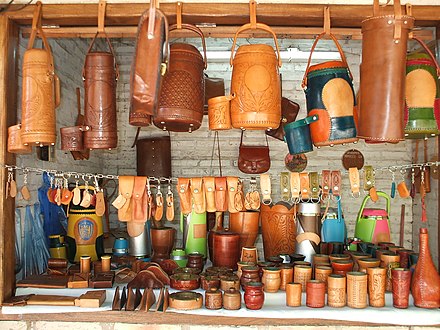 Paraguay has a very rich and diverse craftmanship, everything from silver filigree (Luque) to cotton fine lace in the form of Ñanduti (Itaugua) is available. Also leather goods with local “repujado” embellishments (Atyra) and ao poi, encaje yu embroidery. Ceramic (Ita) and weavery is also very popular, cheap and beautiful. Leather football balls are sold, and hand made in the town of Quiindy.
Paraguay has a very rich and diverse craftmanship, everything from silver filigree (Luque) to cotton fine lace in the form of Ñanduti (Itaugua) is available. Also leather goods with local “repujado” embellishments (Atyra) and ao poi, encaje yu embroidery. Ceramic (Ita) and weavery is also very popular, cheap and beautiful. Leather football balls are sold, and hand made in the town of Quiindy.
Bargaining
Bargaining is not generally common or even necessary. For example, buying a bus ticket, most will state the same price. When boarding a bus outside of terminals though, e.g. along the highway, you can ask for a lower price. Even though, no one generally does that, they will most likely still take you along for the 10 or 20,000 guaranis less, if you ask. Also, with hostels you might ask for a lower price passing on the breakfast. Often, instead of demanding a lower price, just saying that you only got this or that amount left, does work as well. Or if Chipa is GS.2,000, asking 3 for GS.5,000 can work. However, at the market you generally need big amounts to get a discount: no one will bargain for 12 eggs.
Eat
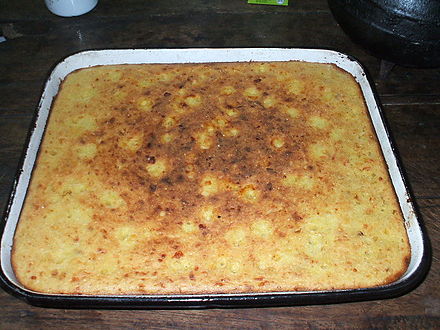

Paraguayan food is one of the most diverse in South America. Paraguayans usually enjoy typical food several times a week all year round. You'll find much of the standard South American cuisine here with some Brazilian influence as well. Paraguayan food isn't particularly spicy, so those who can't tolerate spices won't have problems here.
Paraguay has a tradition for beef which is normally good quality and cheap. Grilled meat (asado) is the thing to eat. Pasta is also popular as are the street stalls selling panchos (hot-dogs), hamburgers, empanadas and similar fast-food. Vegetables, salad and other types of meat are not that common but available. In restaurants you normally get manioc as a side dish for free (similar to bread in other countries).
Local specialties
You must try the Paraguayan traditional food, which includes dishes like the following:
- Chipa-a bread baked in an outdoor oven or "tatacua", usually made out of mandioca (manioc) flour. Mandioca is often substituted for potatoes. Mandioca, or Mandi´o in Guarani is similar to a potato, and is normally eaten boiled but can be fried. It is eaten almost everyday by Paraguayans, and many have it growing on their land.
- Mbeju is a mandioca starch and Paraguayan cheese based flatbread.
- Pastel madi'o is a manioc pastry stuffed with "So'o ku'í" or minced meat.
- Sopa Paraguaya is a form of corn bread are two of the most well known. Sopa means soup, so it is an unusual experience to be actually eating a solid soup, probably the only one in the world.
- Tortillas in Paraguay are different than in other places in Latin America. It is more like a fried dough (made with Paraguayan cheese).
- Payagua mascada (Guarani for chewing gum for dogs but has nothing to do with that) is a tortilla also made with manioc and beef (high in proteins and calories).
- Try Sopa So'o if you get the chance, which is Paraguayan cornbread with bits of pieces of meat often marinated with garlic and lime.
- Pira caldo is a soup consisting of catfish, tomatoes, fat and spices
- Asado (BBQ) is great, and prices are quite reasonable - ₲20,000 will get you an all-you-can-eat buffet at many nice places. ₲5,000 is enough to pay for a hamburger.
- Also highly popular are empanadas (meat/egg stuffed in a pastry and baked) and milanesa (breaded and fried chicken/beef/fish): these are considered fast food, and are also found in other countries in the region. If you order a hamburger at a restaurant, expect it to come topped with a fried egg.
Drink
Mate and Tereré
The most common drink in Paraguay is Mate made of Yerba Mate (Mate herbs) that is similar in style to tea but the preparation is distinct. To add sugar is not common in Paraguay. The infusion is prepared by pouring dry yerba into the cup, then adding water: hot water version is known as mate (preferred in Argentina and Uruguay) while the cold water version is known as tereré and is a local favourite. When it is hot outside, it is more common to drink it as tereré, served in guampas, which can be made out of wood or of hallow bull horns, and is drunk through a metal straw called a bombilla.
Mate is usually enjoyed in the early mornings and late evenings especially during cold days in winter. Terere is enjoyed year-round, though not during lunch time and past sunset, as many recommend. Still, you can see every type of Paraguayan (from construction workers to business executives) carry their tereré set during all times. It is a social activity so the cup is passed around: with in between a refill for each person. If you are offered either you should accept at least one cup. If you can get used to the taste and participate, locals will be appreciative. Often, herbs are added to the tereré water (locally called 'remedios' or 'yuyos', which cure different ailments). For example, adding coconut to one's mate is supposed to help with headaches. The taste is best described as earthy, like a bitter green tea, and it will take getting used to before you can enjoy it.
 Drinking mate or tereré is most definitely one of the social customs of Paraguay. Shops will close around noon for a siesta and for a round of mate/tereré with friends.
Drinking mate or tereré is most definitely one of the social customs of Paraguay. Shops will close around noon for a siesta and for a round of mate/tereré with friends.
Another variation of preparation is to boil the yerba on the stove with sugar then strain it before serving it with milk. It tastes a bit like smoked tea. In this form it is called Cocido, which simply means "cooked".
Other non-alcoholic beverages
- Coffee is mostly of an Italian variety.
- Gaseosa means fizzy drinks of any description. All the usual brands are available. Try the local Guarana.
- Pulp is a very popular Paraguayan soft drink. You can buy it a supermarkets or order it in various restaurantes and bars. The original is Pulp Naranja, made with real orange juice.
- Mosto helado is extracted from the sugar cane and very sweet, sometimes mixed with lime juice to make an 'aloja'. You can find street carts selling mosto near the centro area and in the countryside.
- In Paraguay, orange juice and other fruit juices, unless squeezed fresh, are almost always reconstituted from dehydrated concentrate. This applies to all unrefrigerated Tetra-Pak juices. The dehydration process destroys vitamin C, and unlike in the West, ascorbic acid may not be added back after reconstitution, thus these fruit juices may not contain any appreciable amount of vitamin C. Either check the packaging, buy fresh juice (freshly squeezed from a street vendor, or Purifru brand in the refrigerator cabinet), or enjoy the wide variety of fresh fruit available on many street corners.
Alcoholic beverages
- Beer is widely available, as are many liquors. The national beer brand is Pilsen. However, Brazil's Brahma is very popular.
- Paraguayan hard liquor is similar to rum and is known locally as caña. It is made from sugar cane.
Sleep
Good accommodation will certainly not be hard to find in major towns, and will seem reasonably cheap if the parameter is the dollar or the euro. Prices for cheap and decent accommodation range from GS.40,000 (in/near Asunción and Conceptión) to GS.60,000 (in Encarnación).
The exception, however, is Ciudad del Este. In Ciuded del Este the cheapest accommodation is near the bus station with doubles for less than €10, in an area that is also pleasant in the evening. Cheaper accommodation is easy to find, but if you're after something of higher quality, then you'll have better chances in Foz do Iguaçu (Brazil), just a short bus ride (R$5.50 or GS.8,000) across the bridge, or in Puerto Iguazu (Argentina). However, Brazil is easier regarding immigration, not requiring people to have a stamp if just visiting for a day and thus not checking the buses that enter or leave Brazil. This option is not available with Argentina, and this crossing is also considerably more time-consuming.
Camping in Paraguay is possible and easy, especially in remote regions like the Chaco. Many opportunities exist, just along the highways often you need to search a little more, because the roads are often spotted with poor indigenous population. Camping near the border region with Brazil is probably not recommended. For remote camping sites consult OpenStreetMap, which is also used by this travel guide, and by many mobile Apps like OsmAnd or Mapy.cz. It is community-based and listed (remote) camping site are often verified by real people.
Learn
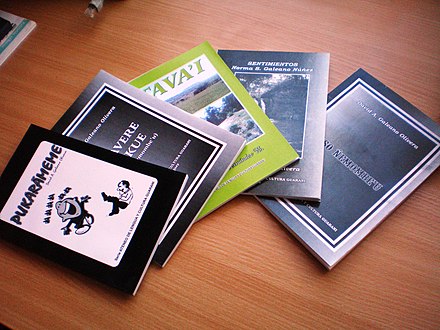
The other official language is Guaraní. It is an indigenous language spoken widely outside of Asunción. Most Paraguayans can speak both Spanish and Guaraní. When Guaraní is spoken, Spanish words are interspersed with Guaraní, especially for words and phrases that are more complicated to say in Guaraní. Classes to learn Guaraní are unheard of for foreigners (though in the big cities, students who speak Spanish as their first language can opt to learn Guaraní as a second language). There are books available in stores, though the best way to learn would be to speak to the locals.
You can learn local artisanry such as ñanduti embroidery and ao poi at the Instituto Paraguayode Artesanía.
Work
Most people who live in the rural areas of Paraguay are subsistence farmers. They eat what they farm and they sell or barter the rest.
Volunteering (and learning Spanish at the same time) is big in South America and thus also in Paraguay: see the general information on the South America article.
Cope
Facebook has a Bolivia, Paraguay, Uruguay Backpacker / Traveler group where you can find other travellers and up-to-date information on the country. In general, also see South America#Cope.
Stay safe
 There are not many large cities and if you use some common sense and street smarts, you are unlikely to run into any trouble. The police are known to be corrupt, and if you are pulled over for any reason, you will almost certainly be expected to pay a bribe. In Asunción most cops are not corrupt. In the cities crime is common, though not as rampant as in other cities such as Rio de Janeiro, São Paulo and Buenos Aires.
There are not many large cities and if you use some common sense and street smarts, you are unlikely to run into any trouble. The police are known to be corrupt, and if you are pulled over for any reason, you will almost certainly be expected to pay a bribe. In Asunción most cops are not corrupt. In the cities crime is common, though not as rampant as in other cities such as Rio de Janeiro, São Paulo and Buenos Aires.
Ciudad del Este is a hotspot for illicit activities, such as money laundering and counterfeiting, but that should not affect your travels. That said, you will want to keep an eye on your bags and wallet here, as you would do in any other large city. Generally, as long as you aren't involved in drug smuggling (inadvertently or otherwise), and are alert to pickpockets, you should be safe most of the time.
Southern regions of Paraguay is part of the South America Tornado Corridor, the second most tornado-prone area in the world (behind the United States Tornado Alley). Monitor local media notices and if you see that the sky is dark, the light take on a greenish-yellow cast or a loud sound that sounds like a freight train, this could be an indication of a tornado. Find shelter immediately. Refer to the tornado safety article for analysis of the issues here.
Stay healthy

- Hospitals in Paraguay range from decent to unsanitary and unequipped. If you get desperately ill, try to get to the best hospital even if it takes a bit longer: you may not find surgical gloves in the worst of them.
- There are many stray dogs running the streets - avoid them. They usually won't bother you.
- You may pick up a foot flea known locally as pique (Tunga penetrans), these will usually collect around your toes. They will lay eggs in your feet if not taken care of - the best way to get rid of them is to pierce the site with a stitching needle and pour hydrogen peroxide over the area, then dig the bug out. If you have picked one up, you may notice itching or tenderness in your feet.
- Paraguay is in the risk zone for the two most common tropical fevers carried by mosquitoes: dengue and yellow fever.
Tap water in Asunción, and possibly Ciudad del Este, is potable. Tap water in the rest of Paraguay should be treated to make it safe for drinking. There have been efforts by PLAN International to bring safe, potable water to communities in rural areas (if there is such water available, it is safe to drink). Ask before drinking water in rural areas: many Paraguayans will claim their water is safe to drink even if it's not purified.
Respect
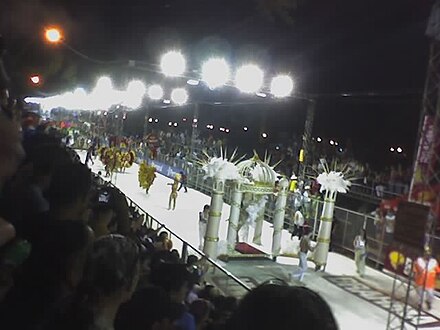
Also when given food, you are obligated to both eat it, and to say that it is good (rico in Spanish). To say otherwise with a person you are not acquainted with can be considered forward and rude.
Conversation
In Paraguay, due to the small number of tourists and foreigners, during a first encounter people might make jokes or start making fun of you. This is not meant in an impolite way, it is just the people acknowledging differences between you and them and should not be interpreted offensively. Paraguayans, just like Argentinians, especially in the cities and among the youth, tend to have a very acid sense of humour.
It is very difficult to find people who speak English in most of the country, but if you are very patient and try to communicate in Spanish or with signs, most Paraguayans will try to help you out. Those who can will often single you out and begin a conversation themselves, eager to try out their English. People are very kind and helpful, and they will be glad to meet a foreigner.
Punctuality and perception of time
Paraguayans have little sense of the value and importance of time. Nothing runs on time, and arriving to a meeting a few minutes late is not uncommon nor considered rude. Flights and buses are almost always expected not to be on schedule.
Connect
By internet
Wi-Fi access is possible at most cafés and restaurants in large cities and touristic towns. Just have a coffee and ask for the password. Public WiFi is also possible in public places like plazas and shopping malls.
Newspapers
Post
Paraguay
paraguay.gov.pyPopulation:7.0 MDial code:+595Currency:Guarani (PYG)Voltage:220 V, 50 Hz
